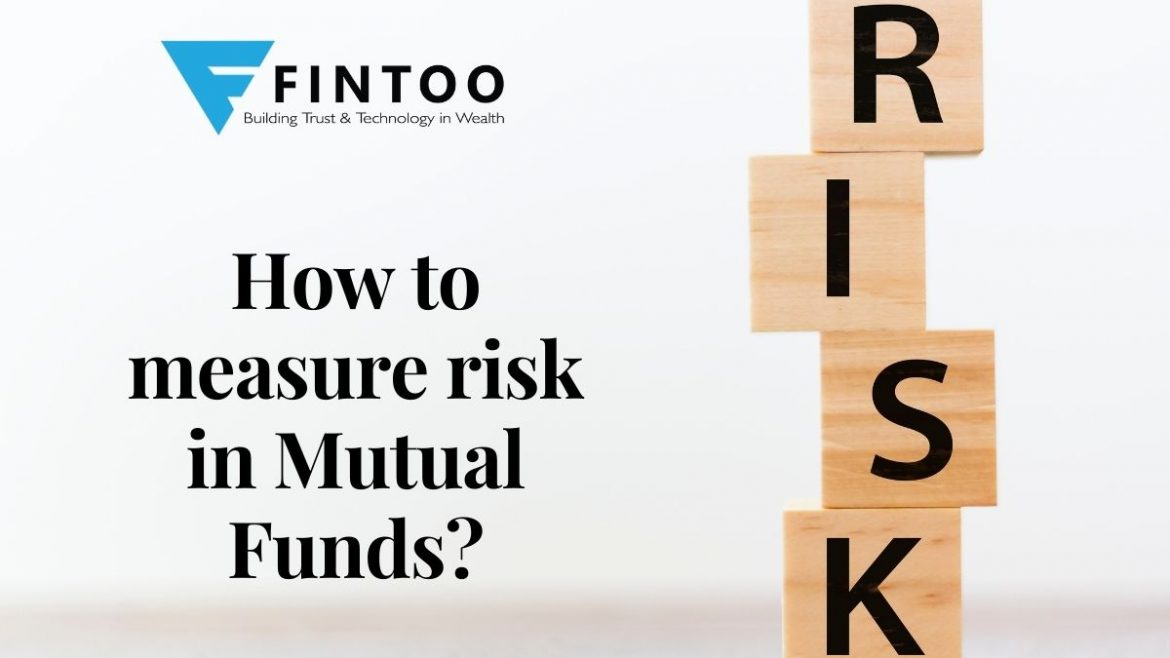

While investing in mutual funds, it is important that you look at past returns, compare the returns with the benchmark, category average and it’s peers. But returns should not be the only criteria while selecting a mutual fund.
One should also look at how much risk is associated with the particular scheme. Risk and return are two sides of the same coin and thus we should not ignore the other side i.e. RISK.
As a rational investor, everyone should look how to obtain maximum return with comparatively lesser risk.
“Mutual funds are subject to Market risk please read the scheme related documents carefully before investing.” Most of us have heard this line many times. So, in this blog we will understand what are the different measures to check risk components in a mutual fund.
Equity vs Debt
Equity investment is considered to be more risky compared to any of the investments because of it’s volatile nature. At the same time, it is also important to understand that if you want to grow your wealth in the long term, this is the only investment avenue which beats inflation and is tax efficient. So one should definitely have some exposure to equity in their portfolio. The safest way to do this is by way of Mutual Funds.
Debt investment on the other hand is for conservative investors but it is also exposed to some risk like interest rate risk, credit risk etc. So it is better to have some knowledge to understand how to measure risk.
Now let’s see how to gauge the riskiness of mutual fund scheme:-
Standard Deviation (SD)
Standard deviation measures the deviation of a fund’s return from it’s average return. Return on a Mutual fund can be predicted based on it’s past returns. Therefore, an average is calculated called as Mean. For example, Fund A has an average return of 12% and it’s Standard deviation is 6%. What does this mean? We should be able to understand and interpret this information. This means that the returns from this fund varies 6% from it’s average. That is this fund returns will vary from 6% to 18%.
Minimum return = 12%-6%=6%
Maximum return =12%+6%=18%
So most of the time, this mutual fund gives return in this range i.e. 6%-18%. Broader this range, higher the volatility which means more risk. Therefore, SD is used to measure a fund’s volatility in comparison to it’s average. High standard deviation means a high volatility. You should choose a fund with a lower standard deviation.
Eg, Fund A – Return – 12%, SD =6%
Fund B = 12%, SD= 2%
Then you should be selecting Fund B because you are expected to get 12% return by taking much less risk.
Beta
In the above point, we are finding out the fund’s volatility in comparison to its own average. But it is also important to compare it with the market. Therefore, beta comes into picture. Beta measures the volatility of the fund compared to it’s benchmark.
When you are looking at the beta of a mutual fund, you are finding out the tendency of your investment’s return to respond to the ups and downs in the market. Here, the market usually refers to the benchmark index the fund follows.
Beta measures the systematic risk in a fund. The beta of the market or the benchmark is always considered to be 1. Now we need to compare the beta of our mutual fund with the beta of this benchmark. How will we do that?
Lets see
A beta of 1.0 indicates that the fund is as volatile as the market. A beta of less than 1.0 indicates that the fund will be less volatile than the market. Correspondingly, a beta of more than 1.0 indicates that the fund will be more volatile than the market. For example, if a fund’s beta is 1.1, it is 10% more volatile than the market.
So you should be selecting a mutual fund according to your risk profile. If you do not want to take much risk then go for a lower beta fund which has a beta of less than 1. If you compare two funds in the same category that are giving similar returns, then you should be selecting one with lower beta.
Risk Adjusted Ratios
We will discuss the few risk adjusted ratios which will help us to understand the risk component in a fund. These are:
Sharpe Ratio: The Sharpe’s ratio uses standard deviation to measure a fund’s risk adjusted returns. This will help you to understand how well your mutual fund has performed in excess of the risk-free return.
If you would have invested in government securities i.e. risk free investment, you will be earning some return without any market risk involved. So it is called risk free return. But as you have decided to invest in a mutual fund, you will be exposed to market risk. Nobody would want to earn a return equal to risk free return after investing in the market. So you would expect a higher return.
This ratio essentially gives you an idea if your returns are due to smart investment decisions or excessive risk.
Higher the Sharpe’s ratio, better the risk adjusted return of your mutual fund portfolio. So when comparing two mutual funds, go for the one with a higher sharpe ratio.
Treynor Ratio : This is exactly similar to sharpe ratio. The only difference is that this ratio considers beta to measure risk adjusted returns. So with the same logic, higher the treynor ratio, better it is.
Alpha : Alpha will give you an idea of the excess returns that your mutual fund may generate, compared to its benchmark. For instance, if a mutual fund scheme has an alpha of 4.0, it usually means that the fund has outperformed its benchmark index by 4%. It can be seen as the additional value the mutual fund manager adds or takes away from the return on your portfolio.
Alpha can be negative or positive. A positive alpha of +2 means the fund has outperformed its benchmark index by 2%. Correspondingly, a similar negative alpha of -2 would indicate an underperformance by 2%. For investors, the more positive an alpha is, the better it is.
Read More :- Know How to Track the Performance of Your Mutual Funds
The Bottom Line
Many investors usually focus exclusively on returns with little or no concern for investment risk. These risk measures can provide an insight to the risk-return equation. You can find these indicators in a fact sheet of a mutual fund and many financial websites.
You can combine the inferences from the above methods of measuring risk with other factors like the fund history, past performance and expense ratio to identify the best-suited mutual fund schemes for your portfolio and your risk profile.
To Invest and keep regular track of your portfolio download: Fintoo App Android http://bit.ly/2TPeIgX / Fintoo App iOS http://apple.co/2Nt75LP
Related Posts
Stay up-to-date with the latest information.


